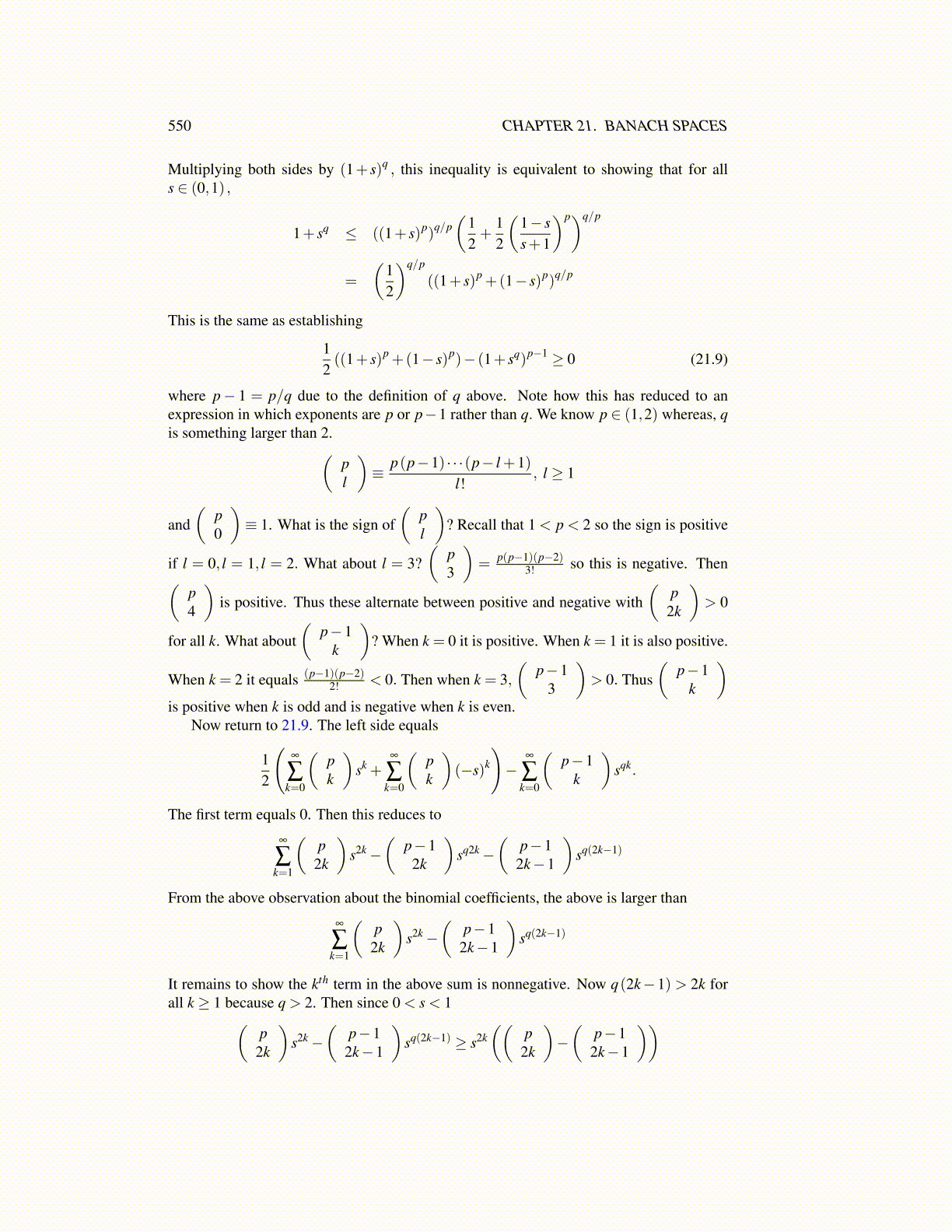
550 CHAPTER 21. BANACH SPACES
Multiplying both sides by (1+ s)q , this inequality is equivalent to showing that for alls ∈ (0,1) ,
1+ sq ≤ ((1+ s)p)q/p(
12+
12
(1− ss+1
)p)q/p
=
(12
)q/p
((1+ s)p +(1− s)p)q/p
This is the same as establishing
12((1+ s)p +(1− s)p)− (1+ sq)p−1 ≥ 0 (21.9)
where p− 1 = p/q due to the definition of q above. Note how this has reduced to anexpression in which exponents are p or p−1 rather than q. We know p ∈ (1,2) whereas, qis something larger than 2.(
pl
)≡ p(p−1) · · ·(p− l +1)
l!, l ≥ 1
and(
p0
)≡ 1. What is the sign of
(pl
)? Recall that 1 < p < 2 so the sign is positive
if l = 0, l = 1, l = 2. What about l = 3?(
p3
)= p(p−1)(p−2)
3! so this is negative. Then(p4
)is positive. Thus these alternate between positive and negative with
(p
2k
)> 0
for all k. What about(
p−1k
)? When k = 0 it is positive. When k = 1 it is also positive.
When k = 2 it equals (p−1)(p−2)2! < 0. Then when k = 3,
(p−1
3
)> 0. Thus
(p−1
k
)is positive when k is odd and is negative when k is even.
Now return to 21.9. The left side equals
12
(∞
∑k=0
(pk
)sk +
∞
∑k=0
(pk
)(−s)k
)−
∞
∑k=0
(p−1
k
)sqk.
The first term equals 0. Then this reduces to
∞
∑k=1
(p
2k
)s2k−
(p−1
2k
)sq2k−
(p−1
2k−1
)sq(2k−1)
From the above observation about the binomial coefficients, the above is larger than
∞
∑k=1
(p
2k
)s2k−
(p−1
2k−1
)sq(2k−1)
It remains to show the kth term in the above sum is nonnegative. Now q(2k−1) > 2k forall k ≥ 1 because q > 2. Then since 0 < s < 1(
p2k
)s2k−
(p−1
2k−1
)sq(2k−1) ≥ s2k
((p
2k
)−(
p−12k−1
))